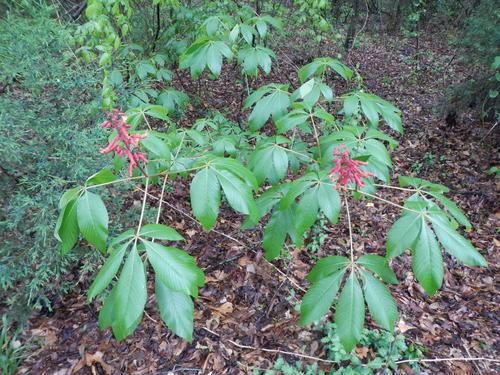
Red buckeye (Aesculus pavia)
Red buckeye, also known as Woolly buckeye
Aesculus pavia, known as the red buckeye or firecracker plant, is a flowering shrub or small tree indigenous to the southeastern and midwestern United States. It stands out with its vibrant red flowers that bloom in spring, attracting hummingbirds and butterflies.
**Key Points**:
- **Common Names**: Red buckeye, firecracker plant.
- **Attracts**: Pollinators such as hummingbirds and butterflies.
- **Toxicity**: Seeds and other parts are poisonous if ingested.
- **Uses**: Primarily ornamental, can also be used to make soap.
The plant typically reaches heights of 10-20 feet and has palmate leaves with five leaflets. Its smooth, round capsules contain 1-3 toxic seeds known as buckeyes.
Key Facts About Red buckeye
Attributes of Red buckeye
Scientific Classification of Red buckeye
Toxicity
The seeds are eaten by humans by mistake, and the leaves can also mistakenly be consumed when made into tea. Small children putting plant parts in their mouths. Ingestion by cats.